 Backend Development
Backend Development Golang
Golang Best practices for building real-time web applications using MongoDB and React in Go
Best practices for building real-time web applications using MongoDB and React in GoWith the popularity of Web applications, real-time performance has become one of the needs of many users. In response to this demand, the Go language, as a fast, efficient, and modern programming language, has become an ideal choice for developing real-time web applications. This article will explore best practices for building real-time web applications using MongoDB and React.
1. Use MongoDB as a database
MongoDB is an open source, high-performance, scalable NoSQL database. It stores data in JSON format and provides powerful query and indexing capabilities. In real-time web applications, MongoDB's advantages are very obvious: it can handle large amounts of data and can easily scale to multiple nodes to cope with high concurrent requests.
When using MongoDB, we need to follow the following best practices:
- Use MongoDB's aggregation pipeline to optimize complex queries. The aggregation pipeline is a powerful query tool in MongoDB, which allows us to perform multiple operations in one query, thereby optimizing the performance of the query.
- Use MongoDB indexes to speed up queries. MongoDB provides many index types, including B-tree indexes, hash indexes, full-text indexes, etc. Using appropriate indexes can improve query performance.
- Use MongoDB's replica set to improve availability. MongoDB's replica set is a cluster composed of a master node and multiple slave nodes. The master node is responsible for write operations and the slave nodes are responsible for read operations. If the primary node fails, the replica set automatically selects another node as the primary node, thereby improving database availability.
2. Use React to build the front-end interface
React is an open source JavaScript library developed by Facebook. It adopts the component design idea to split the interface into multiple reusable components, thus improving the maintainability and scalability of the code. In real-time web applications, React's advantages are also very obvious: it can achieve the effect of updating the UI in real time through state management and communication between components.
When using React, we need to follow the following best practices:
- Divide the UI into multiple reusable components. The design idea of React is to split the UI interface into multiple reusable components, so that the state and communication between components can be better managed.
- Use Redux to manage state. Redux is a state management library that helps us better manage the state between components and supports advanced features such as time travel.
- Use React-Router to manage routing. React-Router is a library for managing application routing. It can help us better organize and manage the application's routing, thereby improving the maintainability and scalability of the application.
3. Use Websockets to achieve real-time communication
Websockets is a two-way communication protocol based on the TCP protocol. It allows real-time communication between the server side and the browser side, and supports bidirectional data transfer. In real-time web applications, Websockets are ideal for real-time communication.
When using Websockets, we need to follow the following best practices:
- Use the Websockets API to implement communication between the client and server. Websockets API is a native API provided by the browser, which can help us establish two-way communication between the client and the server.
- Use the Socket.io library to simplify the use of Websockets. Socket.io is a library based on Websockets that can help us implement two-way communication functions simpler and faster.
- Use Redis as the message queue. Since Websockets is a real-time communication protocol, we need to use a message queue to cache messages for subsequent processing. Redis is a high-performance message queue that can well support the needs of real-time web applications.
To sum up, the best practices for building real-time web applications using MongoDB and React include using MongoDB as the database, using React to build the front-end interface, using Websockets for real-time communication, etc. If we can follow these best practices, we will be better able to build efficient, maintainable, and scalable real-time web applications.
The above is the detailed content of Best practices for building real-time web applications using MongoDB and React in Go. For more information, please follow other related articles on the PHP Chinese website!
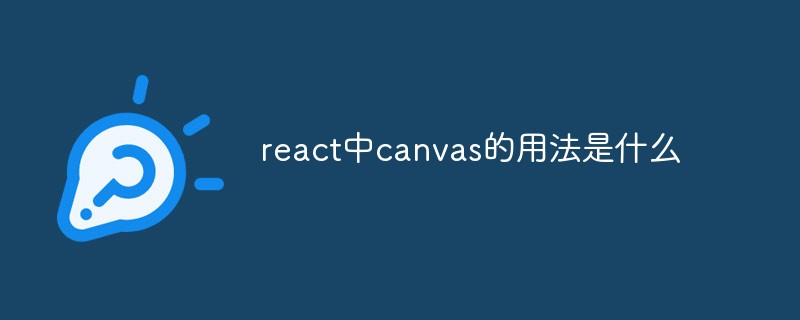 react中canvas的用法是什么Apr 27, 2022 pm 03:12 PM
react中canvas的用法是什么Apr 27, 2022 pm 03:12 PM在react中,canvas用于绘制各种图表、动画等;可以利用“react-konva”插件使用canvas,该插件是一个canvas第三方库,用于使用React操作canvas绘制复杂的画布图形,并提供了元素的事件机制和拖放操作的支持。
 React是双向数据流吗Apr 21, 2022 am 11:18 AM
React是双向数据流吗Apr 21, 2022 am 11:18 AMReact不是双向数据流,而是单向数据流。单向数据流是指数据在某个节点被改动后,只会影响一个方向上的其他节点;React中的表现就是数据主要通过props从父节点传递到子节点,若父级的某个props改变了,React会重渲染所有子节点。
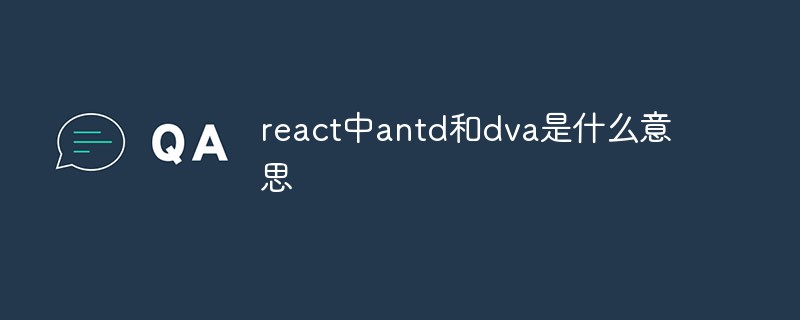 react中antd和dva是什么意思Apr 21, 2022 pm 03:25 PM
react中antd和dva是什么意思Apr 21, 2022 pm 03:25 PM在react中,antd是基于Ant Design的React UI组件库,主要用于研发企业级中后台产品;dva是一个基于redux和“redux-saga”的数据流方案,内置了“react-router”和fetch,可理解为应用框架。
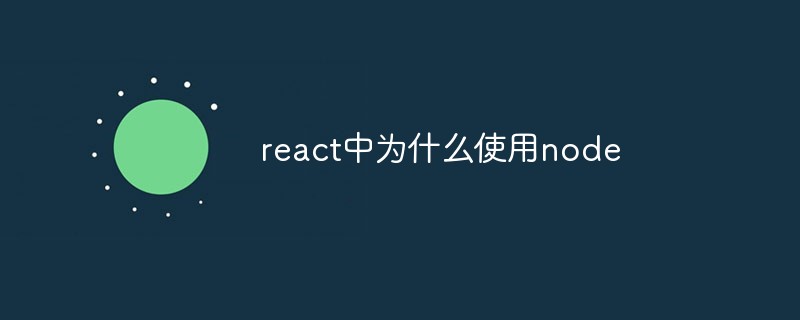 react中为什么使用nodeApr 21, 2022 am 10:34 AM
react中为什么使用nodeApr 21, 2022 am 10:34 AM因为在react中需要利用到webpack,而webpack依赖nodejs;webpack是一个模块打包机,在执行打包压缩的时候是依赖nodejs的,没有nodejs就不能使用webpack,所以react需要使用nodejs。
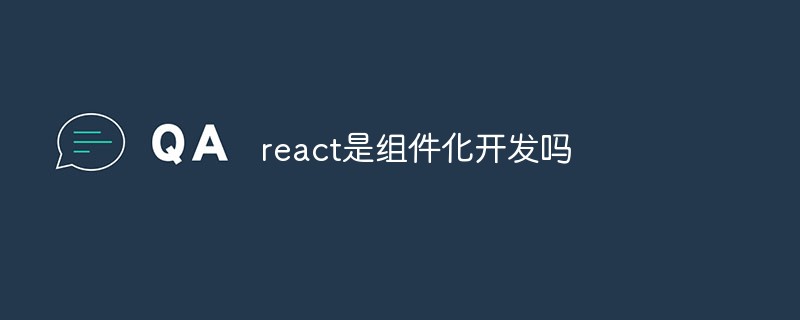 react是组件化开发吗Apr 22, 2022 am 10:44 AM
react是组件化开发吗Apr 22, 2022 am 10:44 AMreact是组件化开发;组件化是React的核心思想,可以开发出一个个独立可复用的小组件来构造应用,任何的应用都会被抽象成一颗组件树,组件化开发也就是将一个页面拆分成一个个小的功能模块,每个功能完成自己这部分独立功能。
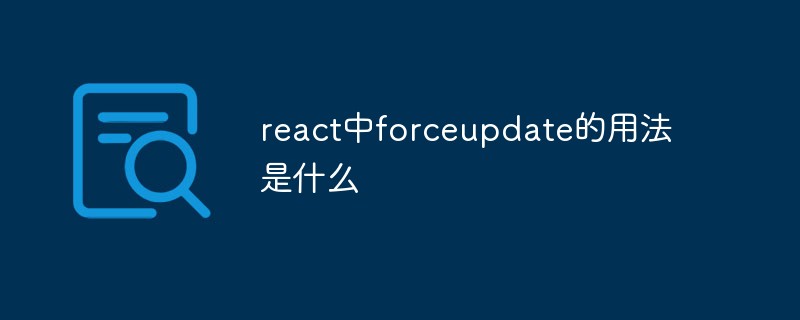 react中forceupdate的用法是什么Apr 19, 2022 pm 12:03 PM
react中forceupdate的用法是什么Apr 19, 2022 pm 12:03 PM在react中,forceupdate()用于强制使组件跳过shouldComponentUpdate(),直接调用render(),可以触发组件的正常生命周期方法,语法为“component.forceUpdate(callback)”。
 react和reactdom有什么区别Apr 27, 2022 am 10:26 AM
react和reactdom有什么区别Apr 27, 2022 am 10:26 AMreact和reactdom的区别是:ReactDom只做和浏览器或DOM相关的操作,例如“ReactDOM.findDOMNode()”操作;而react负责除浏览器和DOM以外的相关操作,ReactDom是React的一部分。
 react native怎么删除组件Apr 21, 2022 pm 04:10 PM
react native怎么删除组件Apr 21, 2022 pm 04:10 PMreact native可以利用“npm uninstall --save 组件”删除组件;npm可用于管理第三方组件包,参数设置为uninstall时,可用于删除软件包,参数“--save”表示会从“packages.json”中获取包。


Hot AI Tools

Undresser.AI Undress
AI-powered app for creating realistic nude photos

AI Clothes Remover
Online AI tool for removing clothes from photos.

Undress AI Tool
Undress images for free

Clothoff.io
AI clothes remover

AI Hentai Generator
Generate AI Hentai for free.

Hot Article

Hot Tools

Dreamweaver CS6
Visual web development tools

Dreamweaver Mac version
Visual web development tools

mPDF
mPDF is a PHP library that can generate PDF files from UTF-8 encoded HTML. The original author, Ian Back, wrote mPDF to output PDF files "on the fly" from his website and handle different languages. It is slower than original scripts like HTML2FPDF and produces larger files when using Unicode fonts, but supports CSS styles etc. and has a lot of enhancements. Supports almost all languages, including RTL (Arabic and Hebrew) and CJK (Chinese, Japanese and Korean). Supports nested block-level elements (such as P, DIV),

Notepad++7.3.1
Easy-to-use and free code editor

Zend Studio 13.0.1
Powerful PHP integrated development environment





